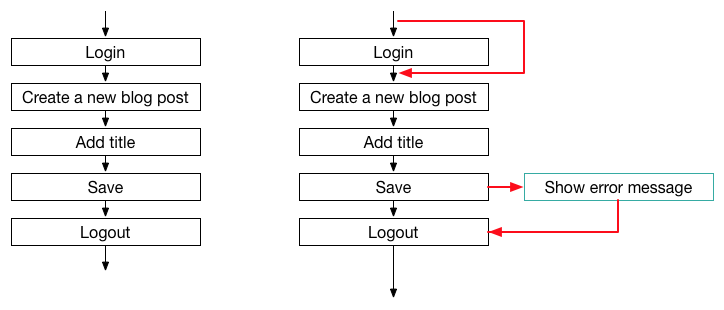Conditionals: Why you should avoid these two letters for better test case execution
At Qualicen, it's often my job to check other people's system test cases and tell the team what I think about these tests. So what do I look for? Well, in principle it is simple: After tests are written down, they are "only" executed and maintained. So this is where tests can be bad and I try to spot things that make execution and maintenance harder. For the maintenance, the largest problem here are clones, which we covered in our last blog post. For the test execution, the main problem that you want to avoid is that different testers test different things. This is called ambiguity and comes in many tastes. In this blog post, I want to explain what is structural ambiguity and why it is bad, and this way help you to create better test cases.
(Scroll to the summary, if you don't care about the details) ;)
Ambiguous test flow
The problem for test execution that I want to discuss here, is an ambiguous test flow. This means, that for a single test case, there are multiple paths that a tester can follow when she executes the test. Let’s look at an example.
[caption id="attachment_145" align="alignleft" width="810"] A simple, straight-forward natural language system test case.[/caption]
A simple, straight-forward natural language system test case.[/caption]
Why test clones mess with your test quality – And how to avoid them
I recently reviewed a manual test suite of one of our customers. One of the first things I check very early in a review is the number of clones (i.e. duplicated parts of a test suite, usually created by copy and paste). In this recent case, I discovered that nearly 70% of the test suite is duplicated. That means, when I take some arbitrary test step, the chance is 70% that the test step is a 1:1 copy of another step. At the top of the post is a tree map that visualizes the amount of clones I found. Each rectangle represents a test, the more red a rectangle is, the bigger the amount of cloning. In my experience, cloning in test suites is the biggest problem with regard to maintainability of a test suite. Cloning causes considerable costs as the effectiveness of the test suite decreases and the effort for maintenance rockets. In this post I take a closer look on cloning in test suites. I show you an example to illustrate how clones can look like and explain where clones come from. Later, I give you good reasons why you should care about clones in tests and discusss strategies you can employ to avoid or at least deal with clones.



